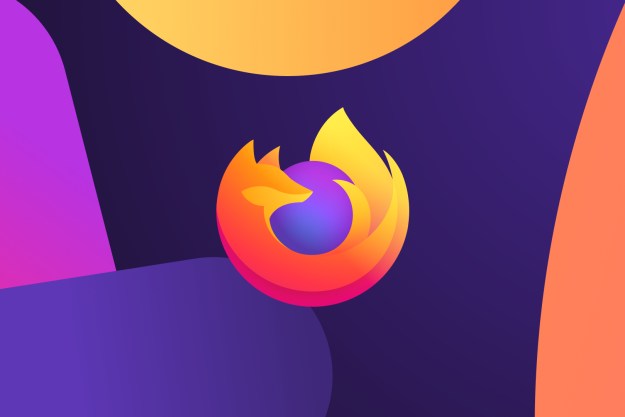Mozilla has big plans for Firefox OS, but it didn’t impress us the last time we used it. In fact, it made us hate phones. Undeterred, a phone running the latest edition of the software – version 1.3 – was sought out at Mobile World Congress, to see if there had been some improvements. However, rather than finding just one phone, we found two, including one all set to be sold directly by Mozilla in the near future.
It’s named the Flame, and it’s a reference phone, built to help developers create and perfect their software. Any manufacturers keen on the phone can license it, rebrand it, and sell it on as their own. It’s a popular strategy in the mobile industry, used to great effect by companies such as Nvidia and Intel. The Flame’s specs are still being finalized, although Mozilla confirmed it would be sold globally.
By Firefox OS standards, the device we saw was well equipped, with a 4.5-inch 480 x 854 pixel touchscreen, a 1.2GHz dual-core Snapdragon processor, and a 5-megapixel camera. The phone has 1GB of RAM, which can be throttled back to 256MB, helping developers test out their apps on a single device, rather than needing access to several.
Installed on the Flame was version 1.3 of the OS, up to date with the very latest features. There are three major alterations. First on the list is Adaptive Search, a feature seen on previous versions of Firefox, which has evolved to become all-encompassing across the device. It’s now accessed by swiping down on the screen, anywhere in the OS, and provides search results based on Web, store and local content. As before, it searches logically, so if you’re looking for information on a band, it won’t just look for their website, but a Spotify page, Wikipedia entry, YouTube videos, and more.
Firefox on the Flame is exactly what a smartphone OS should be – smooth and quick.
The slide-down-the-screen movement to access Adaptive Search isn’t the only new gesture in version 1.3. Swiping left or right from the screen’s edge switches between previously used apps, webpages or other content. On the Flame, with its powerful processor, this worked well. On slow phones, it may not be such a pleasure. Sadly, the new multitasking option wasn’t installed on the other new Firefox phones on display, such as the Huawei Y300 (which actually runs version 1.1 of Firefox OS) and the ZTE Open C, because it’s not quite ready for general use.
Mozilla is also introducing a degree of customization to Firefox OS, so owners can mess around with the home screens, and add their own ringtones. Doing anything more complicated than changing the wallpaper on the first version of the OS was almost impossible, so this is a marked improvement.
Firefox on the Flame is exactly what a smartphone OS should be – smooth and quick. It did still crash after opening a multimedia app though. However, it’s a developer phone, so this can be forgiven. How about the the experience on a regular Firefox OS phone, would that still be below standard? ZTE has launched a successor to the Open, named the Open C, and the good news is, the phone is a vast improvement over the Open; but then it should be, as it has much better specs.
It has a 4-inch, 480 x 800 pixel display, a 1.2GHz dual-core Snapdragon 200, and 512MB of RAM. The old Open had an Etch-a-Sketch, a wood-burning stove, and the memory of an aging goldfish. The spec bump works wonders on Firefox OS, with apps opening and closing without issue, games playing perfectly, and email and messaging operating without a hitch. A few stutters when flicking between home screens did occur, but were barely noticeable.
So, problem solved? Well, not quite. Firefox OS’s natural home is on very cheap hardware, but the Flame and the Open C aren’t going to be absolute bargain basement devices this year. At its own MWC event, Mozilla announced plans to release a $25 smartphone for emerging markets, reaffirming the direction this OS is headed. Firefox OS is getting better, and version 1.3 on the Flame and the Open C works very well. However, for it to succeed at a really low price point, we’ll have to wait for the better hardware to get cheaper, or the software to get more refined on devices with slow processors and little RAM.
Using Firefox OS on a proper phone improved the experience a lot, and has reignited our excitement for the growing OS. At a separate event, Mozilla teased the upcoming release of a tablet and a smartwatch or similar wearable using the software, so the next product we test could be something other than a smartphone. If, along with these new products, the updates continue to improve the experience, Firefox OS may have a chance to worry the big players after all.
Highs
- Genuine improvements over version 1.1
- Gesture controlled multi-tasking is fast and effective
- Much needed customisation options included
Lows
- The speed improvements may be down to the hardware used
- North America ignored on current release schedule
- Still some instability issues
Editors' Recommendations
- One of the biggest smartwatch makers just gave up on Wear OS
- The Google Pixel Watch isn’t great, but it could still save Wear OS
- I desperately want a foldable iPhone, but iOS still isn’t ready for it
- Latest iOS 16 beta addresses rising safety concerns for message editing
- Android 12L and Wear OS 3 show Google still isn’t serious about tablets and smartwatches









